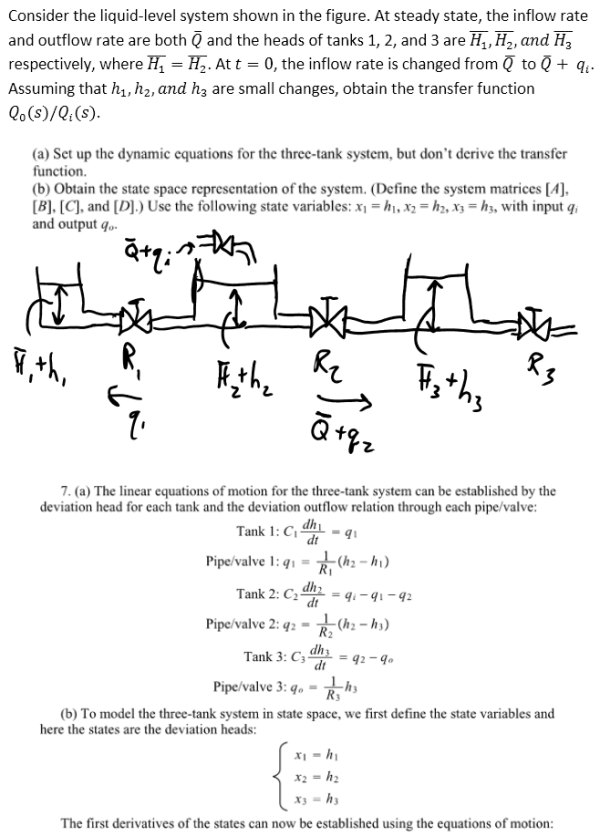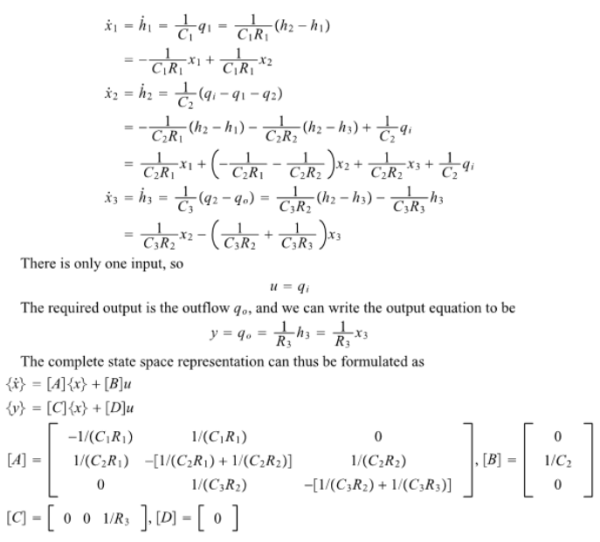Consider the liquid-level system shown in the figure. At steady state, the inflow rate and outflow rate are both Q and the heads of tanks 1, 2, and 3 are Hbar1, Hbar2, and Hbar3 respectively, where Hbar1=Hbar2. At t=0, the inflow rate is changed from Qbar to Qbar+qi. Assuming that h1, h2, and h3 are small changes, obtain the transfer function Qo(s)/Qi(s). (a) Set up the dynamic equations for the three-tank system, but don't derive the transfer function. (b) Obtain the state space representation of the system. (Define the matrices A, B, C, and D.) Use the following state variables: x1=h1, x2=h2, x3=h3, with input qi and output qo.
Highalphabet Home Page dynamics dynamics System Dynamics Page 1


Consider the liquid-level system shown in the figure. At steady state, the inflow rate and outflow rate are both Q and the heads of tanks 1, 2, and 3 are Hbar1, Hbar2, and Hbar3 respectively, where Hbar1=Hbar2. At t=0, the inflow rate is changed from Qbar to Qbar+qi. Assuming that h1, h2, and h3 are small changes, obtain the transfer function Qo(s)/Qi(s). (a) Set up the dynamic equations for the three-tank system, but don't derive the transfer function. (b) Obtain the state space representation of the system. (Define the matrices A, B, C, and D.) Use the following state variables: x1=h1, x2=h2, x3=h3, with input qi and output qo.
System Dynamics Page 2 dynamics dynamics dynamics dynamics dynamics dynamics dynamics System dynamics Page 3